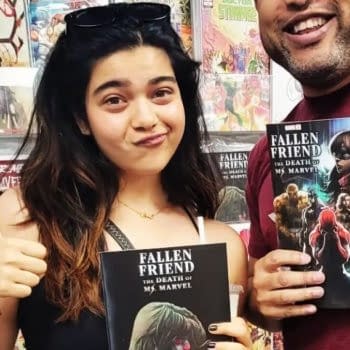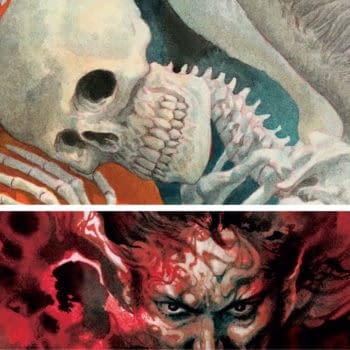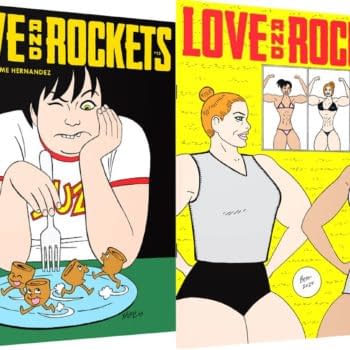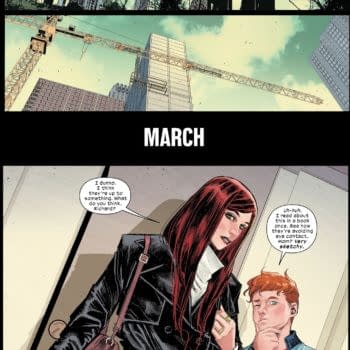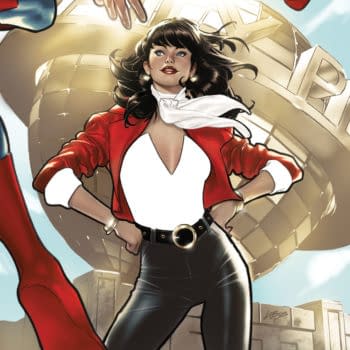Posted in: Comics, Digital, Recent Updates | Tagged:
Kindle Your Comics – A Guide To Amazon's New Comic Creator

On Monday, I checked the Kindle Best Sellers list again and noticed there was no change from the past few days. A growing dynamic marketplace will show a bit of change when it comes to what is selling. The Amazon list was static due to a lack of new content.
I checked in with a large comic book distributor that had been sitting on a submission of mine for five weeks at that point. The book in question, Strange Heroes #1 in a black and white comic written by Bill Willingham with art by Bobby Diaz, Kelsey Shannon, Sam de la Rosa and myself. As far as I can tell, no one has looked at it or moved it forward in any way in over a month.
I called another digital comic book distributor with the intent of moving forward with an approval of that same comic book that is stuck at square one at the other big distributor. In the five weeks since I sent the files in to the two distributors, this house had at least managed to get it formatted. The problem is that their site is so secure that I cannot get in to inspect and approve of the book. Between the two of us, we could not get me past the password to see the book. So I approved the book with the intent of buying a copy and inspecting the final version the old fashioned way, by reading it.
Still, that market at Amazon was calling to me. Over the past few weeks, I had tried using the Kindle Gen software to make a digital comic book from various types of graphics files. The experiments failed in a variety of ways too tedious to represent here.
I researched digital production houses and found a couple of places that would format a 24 page comic for $250. The time involved on the return on investment of converting backlist to digital sales keeps that from being a wise investment. I had the feeling that I was leaving money on the table, but the expense of reaching for it by paying someone to prep old comics for new platforms was too much to gamble.
When it comes to the digital comic book markets, Amazon has a small market share. I like to write mysteries and sell a few books through the Kindle Store. Amazon is a great place for selling fiction without pictures. I have a few books in the store and more on the way.
On Wednesday, Amazon released their Kindle Comic Creator. If the graphics used in the short promotional film look familiar, they should. Amazon used pages from Thom Zahler's excellent series Love and Capes as sample pages during the demo of the book construction process. Using their free software, you can convert graphics files into .mobi files that you can then upload to the Kindle Store. Or send to a friend.
xxx
I've formatted a couple of comics using the software and I've learned a few things.
The Pros
The Kindle Comics Creator software works best when downloaded on its own and not as an add on to the Kindle Previewer which is bundled with the Kindle Gen software. The part of the process that takes the longest is getting the art pages into the correct dimensions. Once the files are tweaked in Photoshop or your software of choice, making a book is pretty easy. Anyone who has created a multi-page .pdf file with Adobe Acrobat will see similarities with the process of creating a comic book.
One of the things that keeps a certain type of fan from buying digital comics is the question of ownership. If you bought your digital comic book collection through one of the big digital distributors, you only get access through their proprietary software. If they go away, so do your books. And if they do something that creates a traffic jam on their site, you might not be able to read what you want when you want. Comics and novels bought through the Kindle Store can be downloaded to your favorite digital device or read from the cloud. Comics bought through the Kindle Store are yours to keep, a plus for fans.
Publishing is a hard business and the margins are slim so every dollar is important. At minimum, the share that goes to the publisher from sales through the Kindle Store is 35%. That rate is for books that fall outside of their sweet spot. On books that sell in the three dollar to ten dollar range, the publisher gets 70%. That beats your best deal by one of the other digital distributors by twenty points. This puts more cash in the publisher's pocket.
Making comics is a hard process. Once your comics are ready for a read, you need to get them to your fans and future fans. If you work with one of the big digital distributors, you make a book and send it to them. If you use the Kindle Comics Creator, you control the pace of creation. You can get to it today or next week. You're in control of the adaptation. I can take a stack of digital files and reformat them in a few hours. They come together quicker than that in the Comics Creator. You handle the adaptation process yourself and you can turn around a book in hours rather than waiting weeks for someone else to get to the job. With the Kindle Comics Creator, you control that work flow and release date.
After assembling the pages, the panel view needs to be created. The Comics Creator has an automated process that helps establish the progression of the panels. That sequence of panels can be tweaked before a final file for the comic is generated. By controlling the construction of the panel view process, the artist gets control of the flow of the story.
The Cons
Creating the guided panel view is a bit frustrating. You modify the panels by grabbing a corner and moving it to adjust two sides of the box that hold that part of the story. The area that you grab is so small that when you're looking at the full page and attempting to resize the individual panels, the corner you're trying to grab seems like it is the size of a pixel. It takes some time to get used to.
I had a chat with a big digital distributor and getting a comic book into the .mobi format does nothing to speed their process. They have their own way of getting that much data from Point A to Point B. No matter the format of the content you send in, it takes as long as it takes.
The Kindle Store is a finicky bit of software. Once books are posted to the Kindle Bookshelf, they cannot be deleted. A book can be pulled from the store and placed from 'live' to 'draft' mode, but once a book is on your shelf. it is there to stay. When you post a book, you are told that it wall take at least twelve hours for the book to go live. At about six hours, Amazon sends you an email to let you know that you have published a book and in that email is a link to your creation. That link does not go live for hours after the initial email goes out. Do not panic and fiddle with your submission as your book is being posted in the store. Any time you tinker with the book, you restart the clock.
I discussed the artistic limitations of the digital space with Derec Donovan, a like-minded freelancer and new publisher thanks to a lump of funding generated by Kickstarter. He complained that desipte the technological advances, the little view screens cannot get a double page spread right. He's correct. The screen size is not large enough yet. But digital comics are not print in the same way that formatted-for-broadcast-TV movies lose something in the translation from the large screen.
Formatting comic book pages that do not account for digital is something of a pain. Fluid, dynamic story-telling shows the flaws in translation from print to digital. Check out the example of Neal Adams' art in the classic story The Joker's Five Way Revenge as an example. The consideration of the full page and the eye movement of Adams or Eisner is not possible with the current digital readers.
By Friday, Strange Heroes #1 was for sale in the Kindle Store and a couple of kind souls bought digital copies. The files that had been stuck on a hard drive are now earning for the publisher and the freelancers with an equity stake. Anyone with access to the Kindle App for their device of choice can buy and keep a version of Strange Heroes #1. That was not true at the beginning of the week.
The Winners
Kindle Users will clearly benefit from a bigger digital spinner rack. Readers will be able to own their digital comic book collection in a way not possible from other distributors. Amazon will benefit by being able to shelve a load of new content in their digital store without fronting the cost of adaptation. Publishers can be more hands on in the processs of getting a book to market.
The Losers
I have used eBook Architects to construct the digital files for the mystery novels I sell through the Kindle store. They offer to format children's books and comics for a fee that starts around $250. They would have to offer a lot of value to beat Amazon's fee: free. Graphic.ly may also fall into this category unless they add more service.
Anyway, that's a view of the market today. Next week will bring more change to the digital landscape. Now if you'll excuse me, I have to go format a few issues of Ex Parte, my comic book about an attorney that represents capes. I might even get the chance to do some drawing. My next project is called Mister Mystery. It is a graphic novel about a two-fisted World War II crime-buster who gets stranded in the alien world of 2013. Click on the guy in the hat to visit the production blog on FaceBook.








